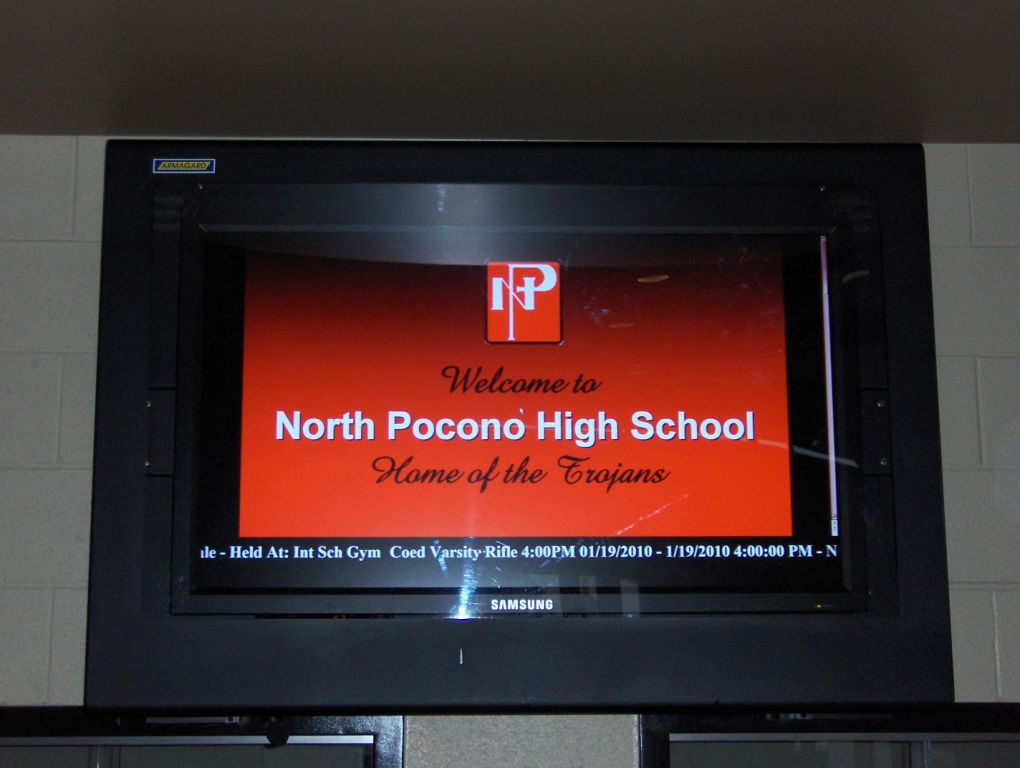Digital Signage and the Value of Real-time Information
Posted by: Richard Williams | Posted on: | 0 Comments
Providing customers and service users with information is an important facet to many industries. Service providers such as hospitals, schools, colleges, public libraries, train stations and bus depots all need to keep people informed of the latest news, information and changes. Doing so, however, is not easy without digital signage.

Digital signage is ideal for delivering information at schools and colleges
Not only does information have to be disseminated to a large number of people, but also information can frequently change, and the time it takes to get the information across can be critical. In emergencies, people need to know what’s going as soon as possible, but this isn’t always possible with traditional information platforms.
Notice boards, for instance, rely on somebody physically changing the information and while public address systems are more immediate, for larger areas and places with high levels of noise they are not always practical. So finding a platform that can relay important information in real-time is a benefit to many service providers and businesses.
Digital signage is one such platform. Not only are digital signage displays a very noticeable medium that can draw the eye and engage with people far more effectively than static signage, but also, there are other benefits to using a digital signage system for relaying information too. Digital screens have the ability to upload information remotely and the ability to do so immediately, two facets that can make it invaluable, especially when there is an emergency or last minute change to a schedule.
This immediacy makes screens housed inside digital signage enclosures ideal for presenting changing information. This is why so many train stations, airports and bus depots now have digital signage screens. The displays keep customers informed with up-to-the-minute information. This helps reduce complaints and provides a far better service to the customer. When a train, plane or bus is delayed, rather than have people become frustrated, digital signage keeps them informed, reducing anxiety and annoyance.
Furthermore, if there is an emergency at a location, such as a transport hub or even a college, school or other public building, people can be forewarned when they arrive, rather than stumble into a situation and endangering themselves. This is particularly beneficial in large areas such as college campuses, where people can arrive at all sorts of different times and at different entrances, which can make warning them of an emergency by a different method very difficult.
Post shortlink:
Popular Products
LCD Enclosure
Need armor for your LCD/LED screen(s)? Outdoors or inside the versatile LCD enclosure protects against thieves, vandals & the weather. Installation idea: NFL stadiums.
Outdoor Digital Signage
Exclusive 46” outdoor screen protection. Dubbed the ‘Totem’, due to its distinct design, it repels damage threats, but attracts audiences. Installation idea: Drive-thru restaurants.
Portrait Flat Panel Enclosure
Safeguard your eye-level advertising display screen(s), indoors or outdoors. Completely customizable, add exciting features like touch screen technology. Installation idea: Restaurant frontages.
Indoor Digital Signage
Popular purchase for retail outlets! Great for ‘point of sale’ persuasion, boost your brand with static & motion advertising from a single unit! Installation idea: Mall of America.




